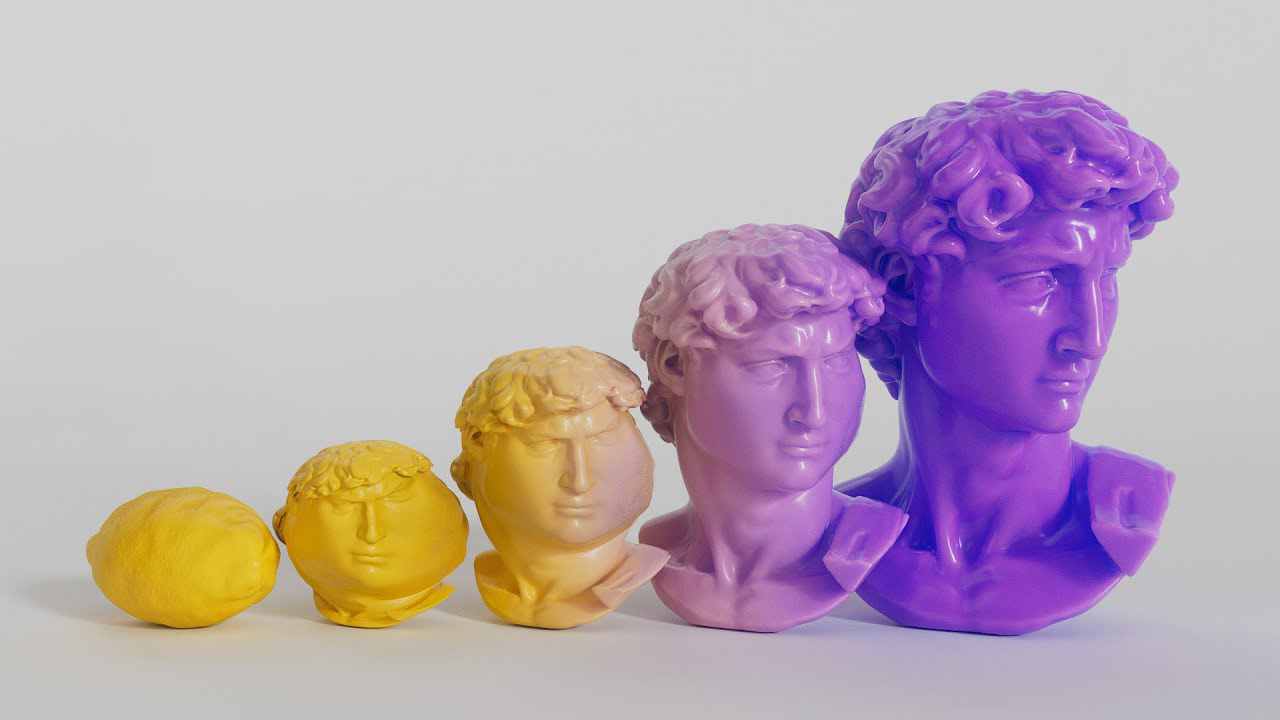We would like to highlight this tutorial released by CG Shortcuts (Dave Bergin), which is truly fascinating. In this tutorial, he will create the morphing effect between two 3D objects by transforming the meshes of one 3D model into another. In this case, he starts with a 3D model of a lemon and morphs it into Michelangelo’s David face, using Cinema 4D tools by Maxon.
C4D Morph Between Objects – Cinema 4D Tutorial
I have always been fascinated by this effect; this transition creates an impressive visual impact and has found extensive use in cinema, video games, and motion design. In this article, we will explore how to recreate the morphing effect in Cinema 4D using the Shrink Wrap Deformer and C4D Dynamics.
What is Morphing Effect?
The morphing effect, or “morphing,” is an animation technique that allows for a gradual transition from one image or character to another, blending the characteristics of both in the process. This technique was first introduced in the 1980s, and we have also seen it in films. Since then, it has made significant progress, thanks to advancements in graphic processing capabilities.
Applicazioni del Morphing Effect
- Special Effects in Films: The morphing effect has been used to create impressive transformations between creatures, characters, or objects in science fiction and fantasy films.
- Animation in Video Games: In video games, the morphing effect can be employed to allow players to transform between different forms or power-ups during gameplay.
- Advertising and Commercials: In the advertising industry, the morphing effect has been used to emphasize product transformations or create captivating visual effects in commercials.
Initially, morphing was primarily used for transitions between 2D images, but with the advent of 3D computer graphics, it has been successfully applied to 3D models. This has opened up new creative possibilities, enabling smooth and realistic transformations of three-dimensional characters and objects.
